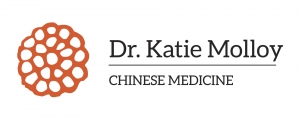How to balance gentle movement and intense exercise for energy, flow and nourishment.
We all know keeping active is good for us. The rush of endorphins after exercise clears the mind, can lift our mood, makes us feel stronger and has numerous physical benefits. In the long term, regular physical activity helps us maintain a healthy weight, reduces risk of disease, increases life expectancy and generally improves physical and mental wellbeing.
So how much and what kind of exercise is best? Australia’s Physical Activity and Sedentary Behaviour Guidelines for adults recommend two and a half to five hours of moderate intensity physical activity, or one and a quarter to two and a half hours of vigorous intensity physical activity per week. Muscle strengthening activity is also recommended on at least two days each week.
Traditional Chinese medicine has an interesting take on exercise. Overly vigorous physical activity is not generally recommended, for fear of depleting Qi or life force. General advice from the classic texts is to be moderately active for most of the day, in order to avoid Qi stasis and conserve energy, as well as using Qi building exercises such as Tai Chi or Qi Gong to improve health and vitality.
Healthy balance and flow
According to Taoist philosophy, healthy and balanced Qi flow is crucial to maintaining wellbeing. Depleted Qi results in exhaustion; we grow physically tired, ill and eventually cannot sustain activity.
Stasis or blockage of Qi is the basis of many diseases, and can be caused by lack of movement. Being physically active is a wonderful way to resolve blockages and restore free flow of Qi so we can run on full reserves.
Particularly if we have a sedentary job, it is imperative to move as much as possible throughout the day. Imagine the body as made up of a network of roads or meridians for Qi flow. As with a traffic jam, blockages in Qi can have run-on effects and lead to imbalances elsewhere. The more gentle movement we undertake, the less likely we are to become stagnated and unwell.
The aim then from the modern Chinese medicine perspective, is to do enough yang-style vigorous activity to keep Qi circulating freely through our bodies, but not too much to deplete ourselves, in combination with yin-style nourishing activity so that we may enjoy more energy, feel vibrant and healthy.
Some examples are below:
Yang-style physical activity
• Running
• Aerobics
• Boxing
• Ball sports
• Lifting heavy weights
Yin-style physical activity
• Yoga
• Pilates
• Tai Chi
• Qi Gong
• Walking
• Stretching
• Gardening
• Lifting lighter weights with higher repetitions
Yang- or Yin-style physical activity, depending on intensity
• Swimming
• Dancing
Setting time aside for physical activity is a good idea, and incorporating incidental exercise daily is a simple way to a more active and healthy lifestyle. Consider walking or cycling for short trips, parking the car or getting on or off the train, bus or tram a couple of stops early to walk the rest of the way, and using the stairs instead of lift, escalator or travelator.
It would be great to make the focus of physical activity about the health benefits, feeling stronger and energised, rather than the physical aesthetic of the body. It’s amazing how the approach we take to movement can change how it makes us feel.
There is nothing wrong with wanting to look good, and with a balanced approach to physical activity our bodies generally become stronger, more toned, and fall within a healthy weight range. More importantly, we feel and look healthier as our Qi grows stronger from the inside out.
Find something you enjoy, whether it’s dancing in the living room, running, lifting hand weights or attending a Tai Chi class, and do it because you know it makes you feel great. It’s a completely different experience to working out as a chore or to reach a goal weight or dress size.
Like anything else when it comes to wellbeing, balance is necessary. Aiming for a minimum of 30 minutes of moderate physical activity every day is sufficient to meet the Australian guidelines. It is important to be able to listen to our body’s needs and respond as necessary. When feeling pent up or frustrated, go for more vigorous exercise. If exhausted, something nourishing like yoga or a deep stretch might be a better option. A healthy goal is ultimately to sit less, move more and incorporate Qi-building exercises into our daily routine.







